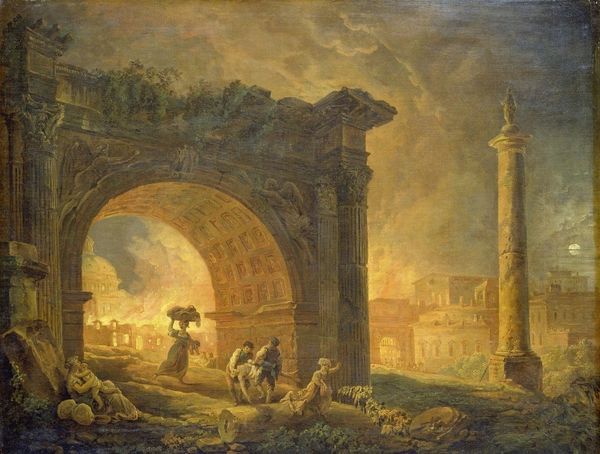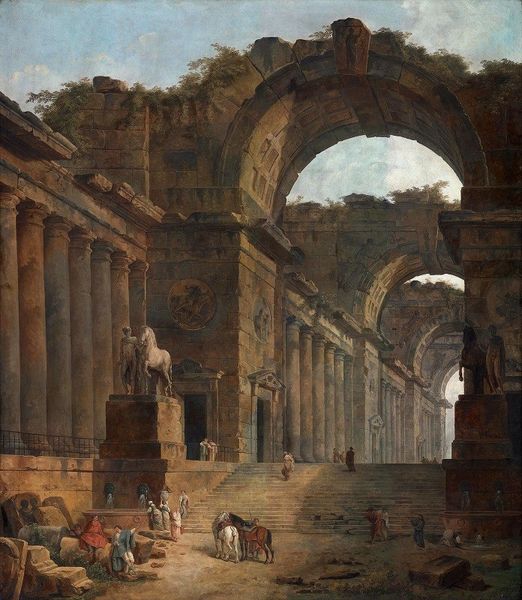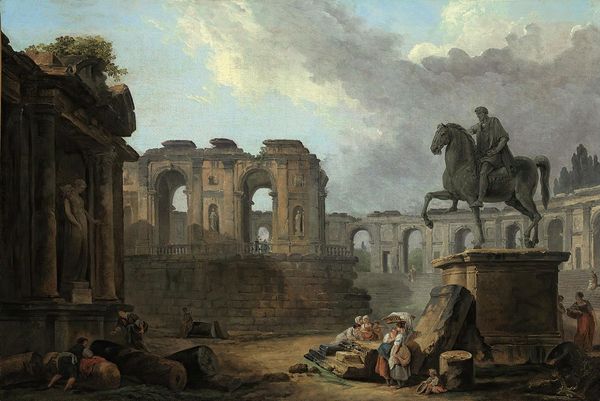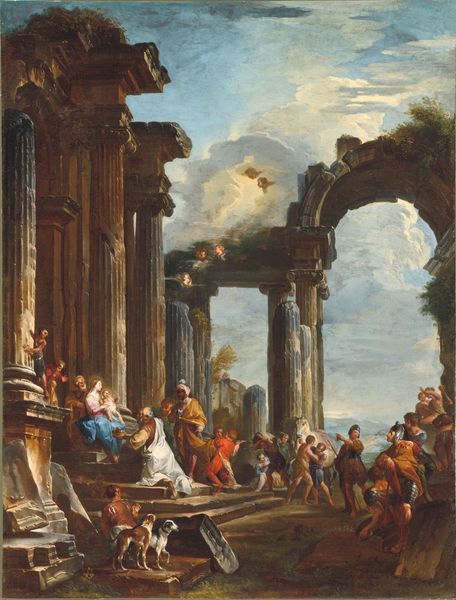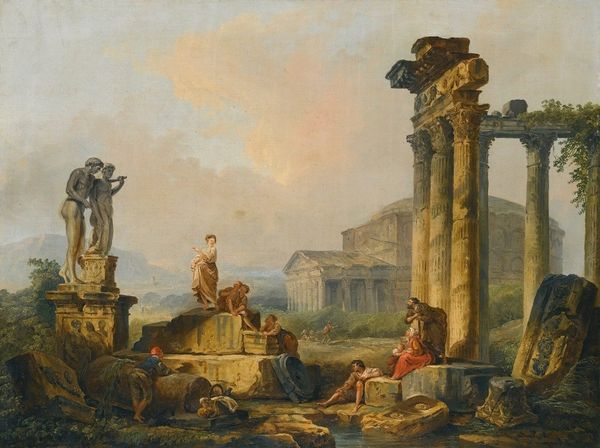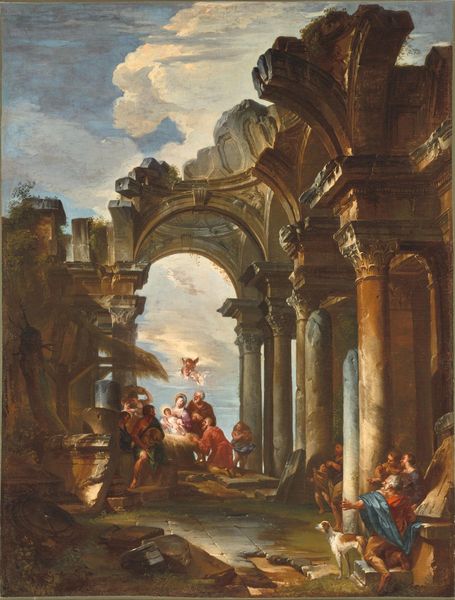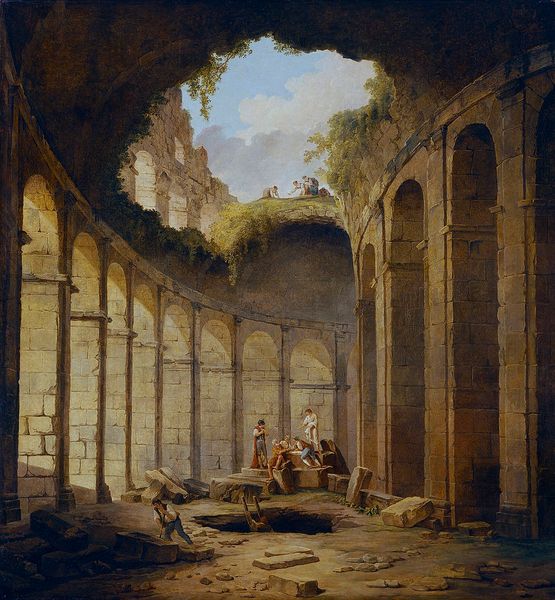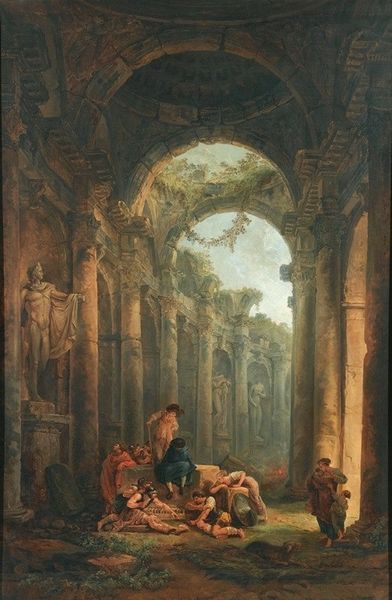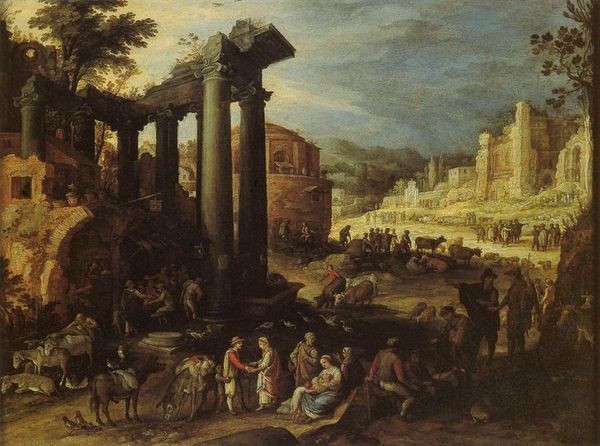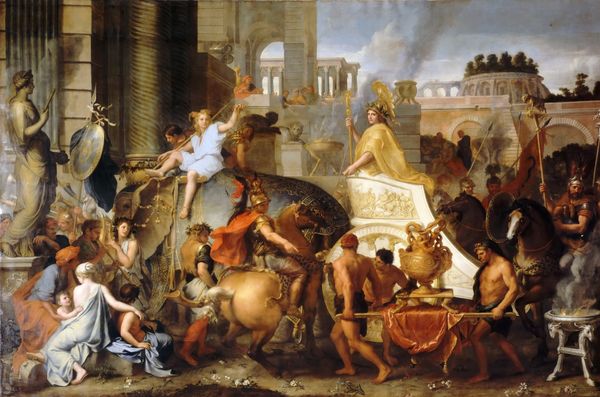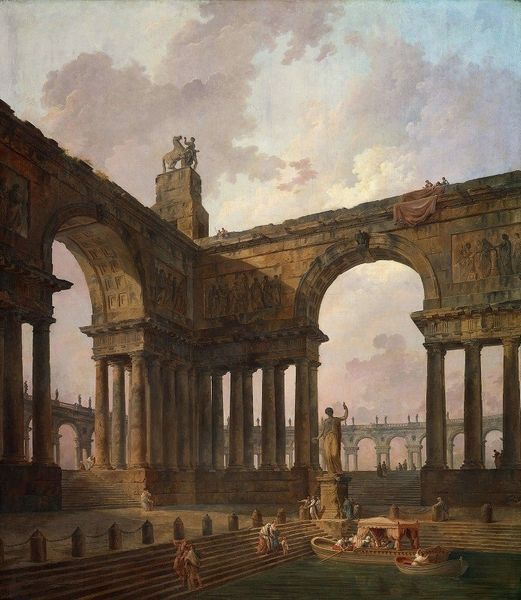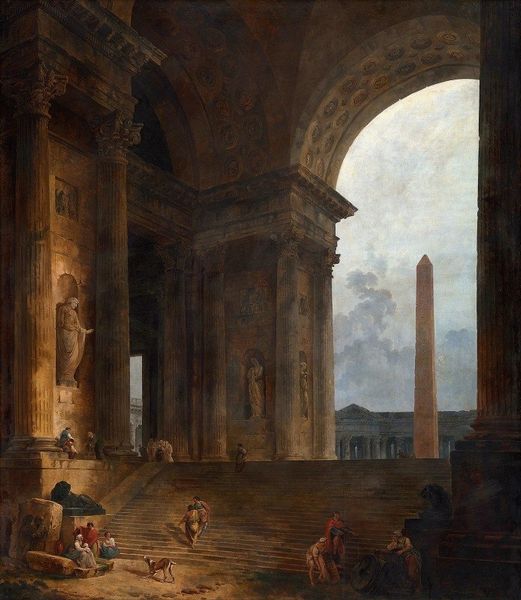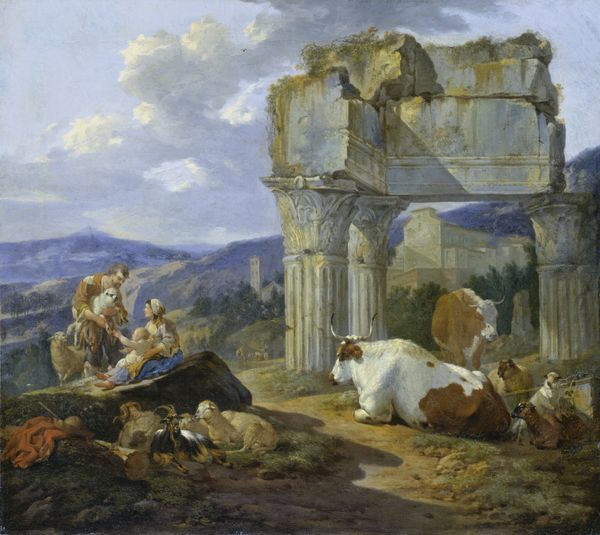
painting, oil-paint
#
painting
#
oil-paint
#
landscape
#
perspective
#
oil painting
#
romanticism
#
cityscape
#
history-painting
#
academic-art
Dimensions: 114.5 x 146 cm
Copyright: Public domain
Curator: Standing before us is Hubert Robert's "Imaginary View of the Grand Gallery of the Louvre in Ruins," painted in 1796. What strikes you most about it? Editor: The scale! The vastness is overwhelming, even in depicting ruins. It’s haunting but also beautiful—that light filtering through the collapsed ceiling... What kind of labor went into building and then imagining this space in such decay? Curator: Indeed, Robert was known for these "capriccio" scenes, blending real and imagined architecture. It speaks to the anxieties of the time, painting this during the French Revolution. A premonition and perhaps also wishful thinking of the end of absolute power and associated symbols. Editor: It also feels like a critique of the obsessive collecting practices of the aristocracy, doesn’t it? These monuments become trophies, looted then abandoned or falling into decay. Look at how the figures in the foreground seem almost dwarfed by the debris, are they gleaning anything from the remnants, what do these stones tell us of the means and labour gone? Curator: That's a sharp point. The Grand Gallery itself, of course, was a symbol of royal power and art accumulation. Robert is playing with that tension: ruin versus idealization of civilization, the Louvre as it was vs. what it *could* become with societal changes. The artistic skill here seems subservient to the statement about public art consumption and accessibility. Editor: Subservient or not, there's real skill here in capturing the texture of crumbling stone, the light playing across the columns, oil paints bringing out a tactile, if imaginary experience! What processes were used to source and process those materials and labour. It brings me back to the inherent worth we prescribe to something. Curator: I agree. There is a deep connection to romanticism with the ruin being used as the perfect symbolic form to convey a powerful message. The dramatic vista serves almost as an accusation on old regime's lavish excesses. It really does underscore your point of the commodification of artwork, which is still an active problem for society today. Editor: It is powerful how Robert uses materiality, combined with composition, to present decay not as solely negative, but as a site of potential—a fresh way to re-evaluate value structures that often underpin cultural artifacts and consumption in today's climate too. It encourages one to view art within shifting societal parameters. Curator: Precisely. Robert gives us an allegorical narrative, a social commentary about how power and even art itself are transient and subjected to historical shifts. Food for thought while inside one of the greatest standing museums. Editor: Agreed, there's always a wider context at play that has far broader socio-political and economic implications, as does everything around us, to a grander or lesser extent.
Comments
No comments
Be the first to comment and join the conversation on the ultimate creative platform.
